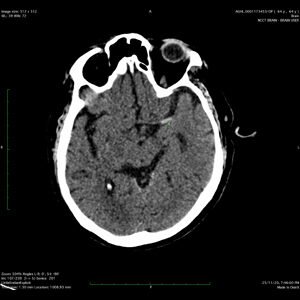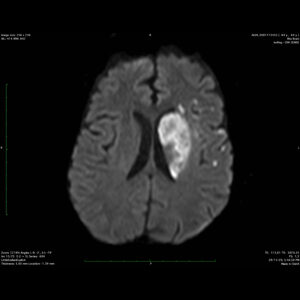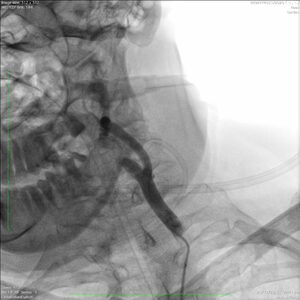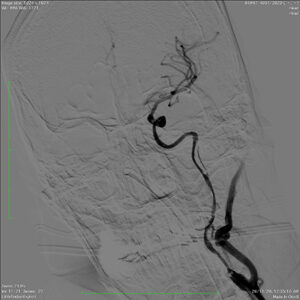This 64-year-old gentleman, presented with dense acute onset right-sided paralysis or hemiplegia along with speech involvement in Emergency of Apollo Multispecialty Hospital within 1 hour of symptomatic onset. On presentation, a CT scan of brain performed which showed dense left middle cerebral artery branch ( dense MCA sign) and diagnosed as a case of acute onset ischaemic stroke, resulting in symptoms.
After discussion with the family, intravenous thrombolysis started in full dose but after 1 hour no improvement in symptoms noted. At this point of time, active intervention or thrombectomy considered for this patient. As an emergency, genexpert test for COVID-19 sent.
After discussions with the Patient’s family in detail about the procedure and its perspective complications with cost involvement including the expected outcomes, patient was taken to Cath Lab in an emergency within 4 hours time. As COVID-19 report was not available, so considering it as a COVID positive patient we went ahead with the full protection or PPE for the procedure.
From the right groin approach, a catheter was placed into the left sided internal carotid artery and check injection showed it is completely occluded from the origin suggestive of longstanding occlusion over which the recent thrombosis of left MCA possibly developed. All attempt to cross the ICA initially failed as the thrombus was quite dense and organised. With repeated attempt, we could aspirate small amount of thrombus and finally make a channel to go inside. The thrombus aspiration large Bore catheter could not be taken up, so we decided to do a stent thrombectomy for the left middle cerebral artery to recanalise it. A microcatheter was taken which advanced through the thrombus into the left middle cerebral artery M1 segment over the wire, the stent retriever opened up and after 5 minutes as per protocol the entire assembly was taken out. Check injection showed excellent flow establishment in the left MCA with thin channel in the left ICA. We expected that the left ICA will close over time but MCA has opened up and that should result in a complete recovery. Towards the end of the procedure, COVID-19 report came as positive. This COVID positive status probably resulted in left ICA thrombosis few days back on which the recent acute thrombus of left MCA developed, resulting in the dense hemiplegia or paralysis of the right side of the body. Complete opening of the left MCA was achieved with excellent distal flow was noted.
Six hour post procedure CT scan showed, only a small infarct involving the left basal ganglia but rest of entire hemisphere saved and showing normal appearance. MRI with angio done after 72hrs showed patent Lt MCA and Left sided established infarct. Patient made an excellent recovery and has started moving his right limb (both upper and lower) little bit even on the table. He finally discharged in stable condition after around 10 days from the hospital with dysarthric speech and partial improvement in the power in both upper and lower limbs without any haemorrhage or other complication.
This is probably the first ever patient done in the Eastern India in a COVID positive patient having acute stroke in which acute thrombectomy resulted in excellent recovery. Intracranial thrombectomy now is the a standard of care in patients of acute ischaemic stroke and should be offered in major vessel occlusion if patient presented within window period.




